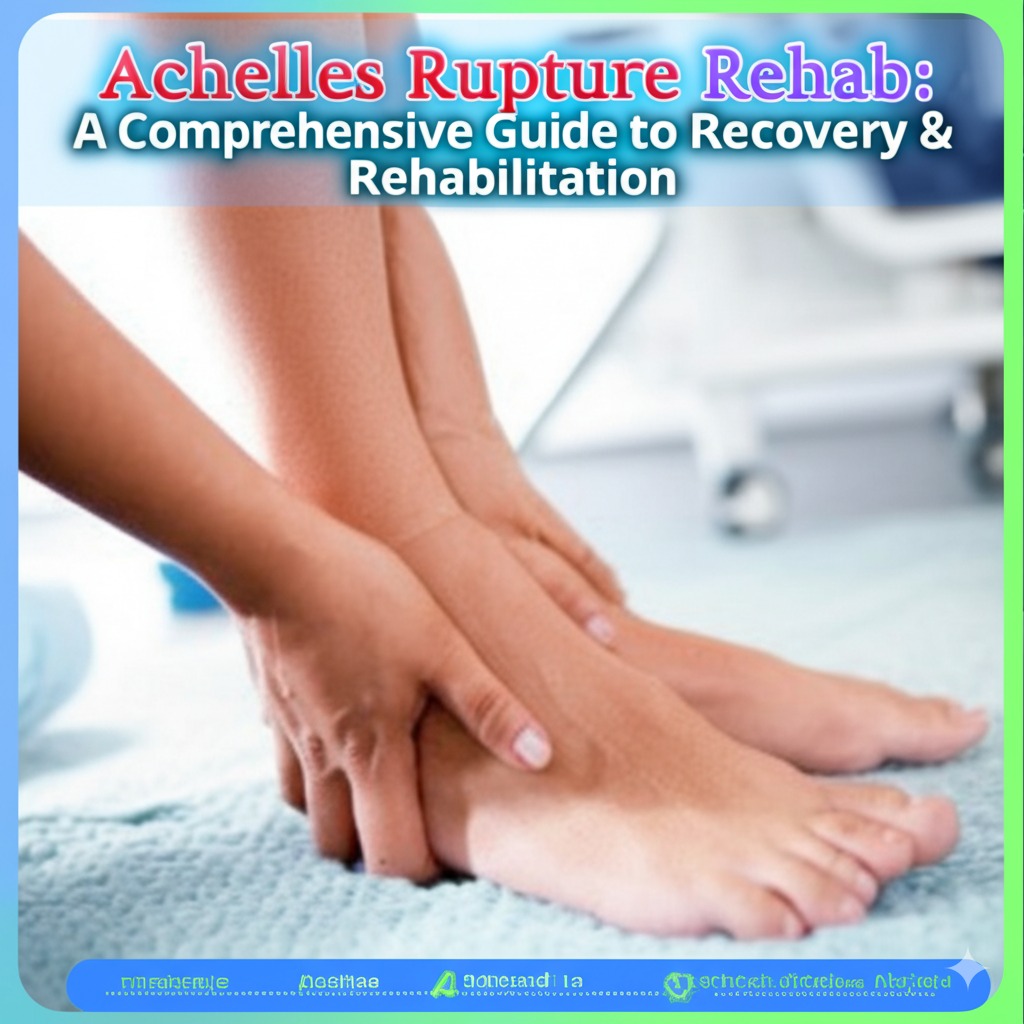An Achilles tendon rupture can be a life-altering injury, leaving athletes and everyday individuals alike facing a lengthy recovery. Whether you are recovering from surgery or managing a conservative treatment plan, the rehabilitation process is key to regaining strength, mobility, and a return to activity. This article will provide you with a detailed guide to Achilles rupture rehab, covering everything from initial treatment to long-term recovery strategies.
Understanding Achilles Tendon Rupture
The Achilles tendon, located at the back of the lower leg, connects the calf muscles to the heel bone. A rupture, or complete tear of this tendon, often occurs during intense physical activity, such as running, jumping, or pivoting. Symptoms can include a sudden sharp pain, difficulty walking, and swelling.
A rupture typically requires medical intervention, either through surgery or non-surgical treatments. The rehabilitation process following an Achilles rupture is vital for restoring full function and avoiding long-term complications.
Key Phases of Achilles Rupture Rehab
The rehabilitation process for Achilles tendon rupture is divided into several phases, each with its focus on different stages of healing. Below, we break down the rehabilitation journey:
1. Acute Phase (Weeks 1-2)
During the acute phase of Achilles rupture rehab, the primary goal is to reduce swelling and manage pain while allowing the tendon to begin healing. This phase typically involves:
- Rest: Avoid any weight-bearing activities on the affected leg.
- Ice: Applying ice packs regularly to reduce swelling and inflammation.
- Elevation: Keeping the leg elevated helps minimize swelling.
- Immobilization: A walking boot or cast may be used to keep the foot in a stable position.
Your doctor may also recommend over-the-counter anti-inflammatory medications to manage pain. At this point, it is crucial to follow your physician’s recommendations to avoid stress on the healing tendon.
2. Early Rehab Phase (Weeks 3-6)
Once the initial pain and swelling have subsided, and your Achilles tendon is starting to heal, you’ll transition to the early rehab phase. The focus shifts to gentle motion and avoiding stiffness.
- Range of Motion Exercises: Gentle ankle stretches and mobility exercises are key to maintaining flexibility.
- Partial Weight Bearing: You may be instructed to begin putting a little weight on the injured leg, gradually increasing as you heal.
- Physical Therapy: Physical therapy may be recommended to help you regain flexibility and strength.
This phase is about moving cautiously while avoiding overloading the tendon too soon.
3. Strengthening Phase (Weeks 7-12)
As your Achilles tendon heals further, you can start focusing on strengthening exercises. This phase focuses on improving muscle strength, balance, and coordination.
- Eccentric Exercises: Eccentric exercises, where the tendon is lengthened under tension, are a crucial part of rehabilitation. These exercises can help restore tendon strength and function.
- Weight Bearing Activities: Gradually increase your weight-bearing capacity. Walking and light jogging on flat surfaces may become part of your rehab program.
- Balance and Stability Training: Incorporating balance exercises, such as standing on one leg or using a wobble board, will help improve ankle stability and prevent future injuries.
Strengthening the calf muscles and improving the overall functionality of the lower leg is key to preventing re-injury.
4. Advanced Strengthening and Return to Activity Phase (Months 3-6)
During the later stages of rehabilitation, your focus will shift to more dynamic and sport-specific movements. By this stage, the tendon should be sufficiently healed, and you’ll start preparing for a return to your regular activities.
- Sport-Specific Exercises: If you’re an athlete, sport-specific training, such as running drills or jumping exercises, will be introduced to gradually restore your agility and performance.
- Plyometric Training: Incorporating jump training helps rebuild explosive power in the legs.
- Continued Strength Training: Continue to focus on strengthening the calf and ankle muscles through resistance exercises.
This phase is essential for preparing to return to full activity and avoiding the risk of re-injury.
Common Challenges in Achilles Rupture Rehab
While most people recover successfully from an Achilles tendon rupture, the rehab process can come with some challenges. Being aware of these hurdles and how to overcome them can help ensure a smoother recovery:
- Pain Management: Pain during rehabilitation is common, particularly when starting to introduce weight-bearing exercises. It’s essential to manage pain without overexerting the tendon.
- Tendon Stiffness: Some people may experience lingering stiffness in the Achilles tendon after the initial recovery. Regular stretching and range of motion exercises can help alleviate this issue.
- Re-injury: Returning to physical activity too soon can result in re-injury. Always follow a gradual and well-structured rehab program.
Working with a healthcare provider or physical therapist can help mitigate these challenges.
Tips for a Successful Recovery
- Be Patient: Recovery from an Achilles rupture takes time, often months. Rushing the process can lead to setbacks and complications.
- Follow Your Rehab Program: Stick to the exercise and rehabilitation plan set by your healthcare provider. Consistency is key.
- Listen to Your Body: If you experience pain or discomfort beyond what is expected, consult with your doctor. It’s important to avoid pushing through pain.
- Consider Nutrition: Eating a balanced diet rich in protein, vitamin C, and zinc can support the healing process.
Conclusion: The Road to Full Recovery
Achilles rupture rehab is a gradual process that requires dedication and patience. By understanding the stages of recovery and following a structured rehab program, most individuals can fully recover and return to their normal activities. Whether you’re an athlete or someone who enjoys a casual walk, regaining full function of your Achilles tendon is achievable with the right care and rehabilitation.
If you’re currently recovering from an Achilles rupture, stay committed to your rehab plan, and always seek professional advice when needed. Remember, consistency and patience are your best allies in ensuring a successful recovery!

Kallie Snyder is an author at Stonegate Health Rehab, providing valuable insights, recovery guidance, and rehab resources to help individuals achieve better health and well-being.
